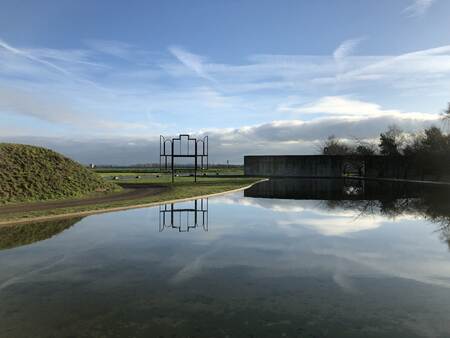
Raketenstation Hombroich 1
41472 Neuss
Deutschland
Langen Foundation
Foundations and collections of modern and contemporary art based on private initiative play a vital role in enriching the diversity of the cultural landscape of public museums, institutions, and artist-run spaces in the Rhineland. Driven by passion and a belief in social responsibility, private initiatives establish self-funded exhibition spaces, initiate art fellowships, make donations and provide loans, act as sponsors, and finance new productions.
Alongside the concentrated creation of unique collections of emerging as well as established art, they support artists’ careers and pursue an archival mission. With Rhineland Independent, four of these initiatives - Langen Foundation, KAI 10 I ARTHENA FOUNDATION, Sammlung Philara and Julia Stoschek Collection - will merge for the first time to jointly present their multifaceted programs and conceive new projects. The strength of this cooperation lies above all in the diversity, respective specialisation, and individual agenda of the given players.
In the end, the multifarious institutional and thematic focuses mirror the diversity of a dynamic artistic discourse.
The Japanese Collection
The Japanese collection of Viktor and Marianne Langen is unique in Europe in terms of scope and quality. With around 350 works, it provides a representative overview of Japanese art from the 12th to the 20th century. The collection includes not only religious art, but also ceramics from the prehistoric Jomon period and Buddhist statues from the Nara and Heian periods. The broad spectrum of the painting holdings ranges from examples of courtly painting of the Kano school, to works by renowned artists such as Maruyama Okyo (1733-1795), to genre painting of the 19th century.
Like all areas of their collection, the Langens' Japanese collection is shaped exclusively by the personal taste of the collector couple. Unlike other collectors of Japanese art, Viktor and Marianne Langen did not acquire the works of art on the European art market, but directly in the country of origin. Viktor Langen had been travelling to Japan on business since the early 1960s. Interested in other cultures, the art collector was also fascinated by Japanese art and decided to acquire beautiful pieces. A courageous undertaking, since in the early 1960s there was neither a national nor an international market worth mentioning for Japanese art. Equipped with good contacts and an interpreter, Viktor Langen sought out and found the few dealers and gallery owners for Japanese art in Japan. In consultation with his wife, he concentrated on acquiring "unique objects". Editioned works such as woodcuts were not considered.
In 1979, Viktor and Marianne Langen set up a private museum in their house in Ascona for the Japanese scroll paintings, which they exhibited here in darkened rooms. At the beginning of the 1990s, after the death of Viktor Langen, Marianne Langen had the collection examined and scientifically reappraised by Japanese art experts. The experts came to the conclusion "that two thirds of the works are of the very highest quality" (Marianne Langen).
In 2004, the Langen Foundation exhibition building by Tadao Ando was the last outstanding work of Japanese art to be added to the collection. Marianne Langen described the building, whose completion she unfortunately did not live to see, as "the greatest work of art I have ever acquired".
A first comprehensive exhibition of the Japanese collection took place in 1998/99 entitled "Autumn Wind in the Pines" at the Museum of East Asian Art in Cologne. Subsequently, the show was on display at the Kunsthalle Tübingen, the Museum für Kunst und Gewerbe, Hamburg and various museums in Japan.